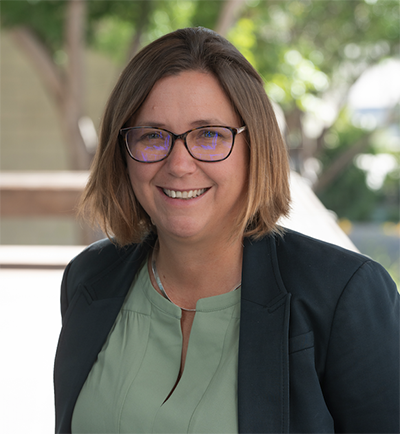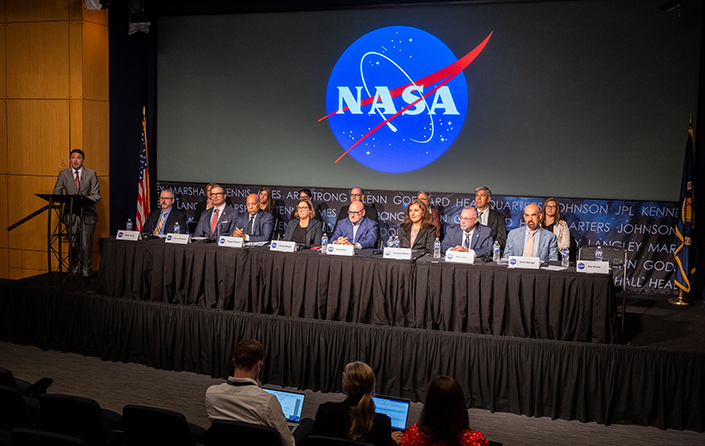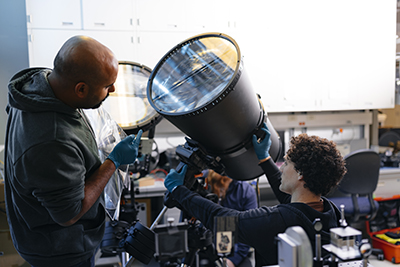Beyond UFOs: the Future of Unexplained Anomalous Phenomena
Astrophysicist Shelley Wright discusses NASA and the search for intelligent life
Story by:
Published Date
Article Content
UC San Diego Professor of Astronomy and Astrophysics Shelley Wright has a lifelong love of outer space. She’s made a career of building state-of-the-art telescopes that can study everything from black holes to “technosignatures” from alien civilizations. Wright, who recently served on NASA’s panel on unexplained anomalous phenomena (UAPs), takes a moment to reflect on her career, the panel and the ongoing search for extraterrestrial life.
What kind of research do you specialize in?
I'm an experimental astrophysicist. One topic I've studied throughout my career is SETI — the search for extraterrestrial intelligence — particularly in trying to build new devices that operate at unique wavelengths to search for what we call “technosignatures” — technological evidence or signals from an alien civilization that is detectable across interstellar distances.
How did you become interested in astrophysics and SETI?
I was captivated by humanity’s question of “Are we alone?” This led me to ponder our place in the universe and whether there is other intelligent life that existed and co-exists with us now. In pursuing those questions, I fell in love with the universe.

I got involved with SETI early in my career. I was a junior at UC Santa Cruz and saw an advertisement for the first-ever astrobiology conference, which was an emerging field at the time. On a whim, I decided to cut school and attend. It was there I met other SETI researchers, and I've collaborated with them and the community ever since.
How did you get selected for the NASA UAP panel?
I’ve been exploring this topic for over 20 years and have established myself as a SETI researcher in the field of astrobiology. I also specialize in developing unique instrumentation, and have thought extensively about how to image and sense unusual characteristics in the night sky. I think these qualifications likely played a role in why I was selected.
For NASA to even form a UAP panel — it lent credibility to the field was a big deal for the scientific community and the public. It was apparent that the panel process was intended to make a positive impact in the field and within our scientific and national community. I was also struck by the caliber and diversity of the panel members and could see that our approach to this problem would be unique, so I agreed to participate.
What was the main objective of the panel?
I think the public and even the scientific community had different expectations about what our panel was charged to do. Some people presumed we would sit down and analyze every single UAP case out there. We did investigate several UAP cases to better understand the characteristics of observed and reported UAPs, but our primary objective wasn’t to diagnosis each case.
The panel was tasked with understanding the landscape of UAPs, what they look like and how often UAPs were reported. What kind of resources could NASA and other government agencies offer? What kind of industry partnerships could be beneficial? Our goal was to establish guidelines for processes, scientific protocols and communications across government agencies for future UAP events.

How would someone report a sighting?
It’s a great question. The panel spent a lot of time investigating how things were reported, and the truth is, there isn’t really a functioning reporting mechanism within U.S. government agencies. One of our leading recommendations was to fix this and to have better inter-agency communication. The difficult thing with reporting is that it's often anecdotal, and there’s little-to-no data to assess.
The panel explored the use of cell phones and metadata on cell phones. If someone did record something, what metadata would be associated with it? For instance, in what direction was the phone pointing? What were the conditions? Was the data manipulated? The panel also looked at earth-observing satellites and the type of data we have today and will have in the future for scientific investigations. Proper reporting in all these cases is important since we want to access the right scientific data for follow-up investigation.
Do you think in our lifetime we will find something that looks like a sign of extraterrestrial life?
In the context of UAPs, I think it would be really surprising if we ever found a marker that alien life was here on planet Earth. Simply because of the energy resources needed to travel between stars, the time it would take — it really is unfathomably large. You get humbled by it, being an astronomer.
But I do think that in our lifetime we will find something. Maybe a biosignature in a distant planet's atmosphere. It could even be what we call an “artificial signal” in another atmosphere that showed the presence of some technology. Maybe it’s a direct signal, but that’s an even rarer possibility.
Truthfully though, we don't know the answer to this question. And what shocks me most is that we barely try to answer it. That’s why I’m interested in this field. I do SETI research because we should be looking for the answer.

Now that the panel has concluded, what’s next on the horizon for you?
In terms of life in the universe, there are a lot of exciting projects out there. Of course, James Webb Space Telescope is capturing amazing images and is also recording spectra to try to understand the chemical compositions of exoplanet atmospheres. There are also future missions like the Roman Space Telescope, launching in 2027.
We have ground-based facilities too — extremely large telescopes coming online that will also record spectra of planetary atmosphere. There are dedicated SETI programs, like Breakthrough Listen, where we continue to look for technosignatures at radio wavelengths.
For myself and my projects here at UC San Diego, we did the first ever near-infrared SETI search to explore signals at new wavelengths. Now we have an ambitious program to build an optical, or visible light, observatory where we try to image the entire observable sky, all the time at very fast speeds. Which, coincidentally, is also interesting for Earth-bound objects that are moving quickly in our atmosphere as well. That project is called Panoramic SETI. We've spent the last several years conducting research and development, building unique detectors and telescopes. Panoramic SETI is now ready, and our goal is to build a SETI optical observatory. If we pull this off, it’ll be a first in technosignature and astrophysical research. I’m really excited about what we might discover.
Learn more about research and education at UC San Diego in: Artificial Intelligence
Share This:
You May Also Like
UC San Diego is Strengthening U.S. Semiconductor Innovation and Workforce Development
Technology & EngineeringStay in the Know
Keep up with all the latest from UC San Diego. Subscribe to the newsletter today.



